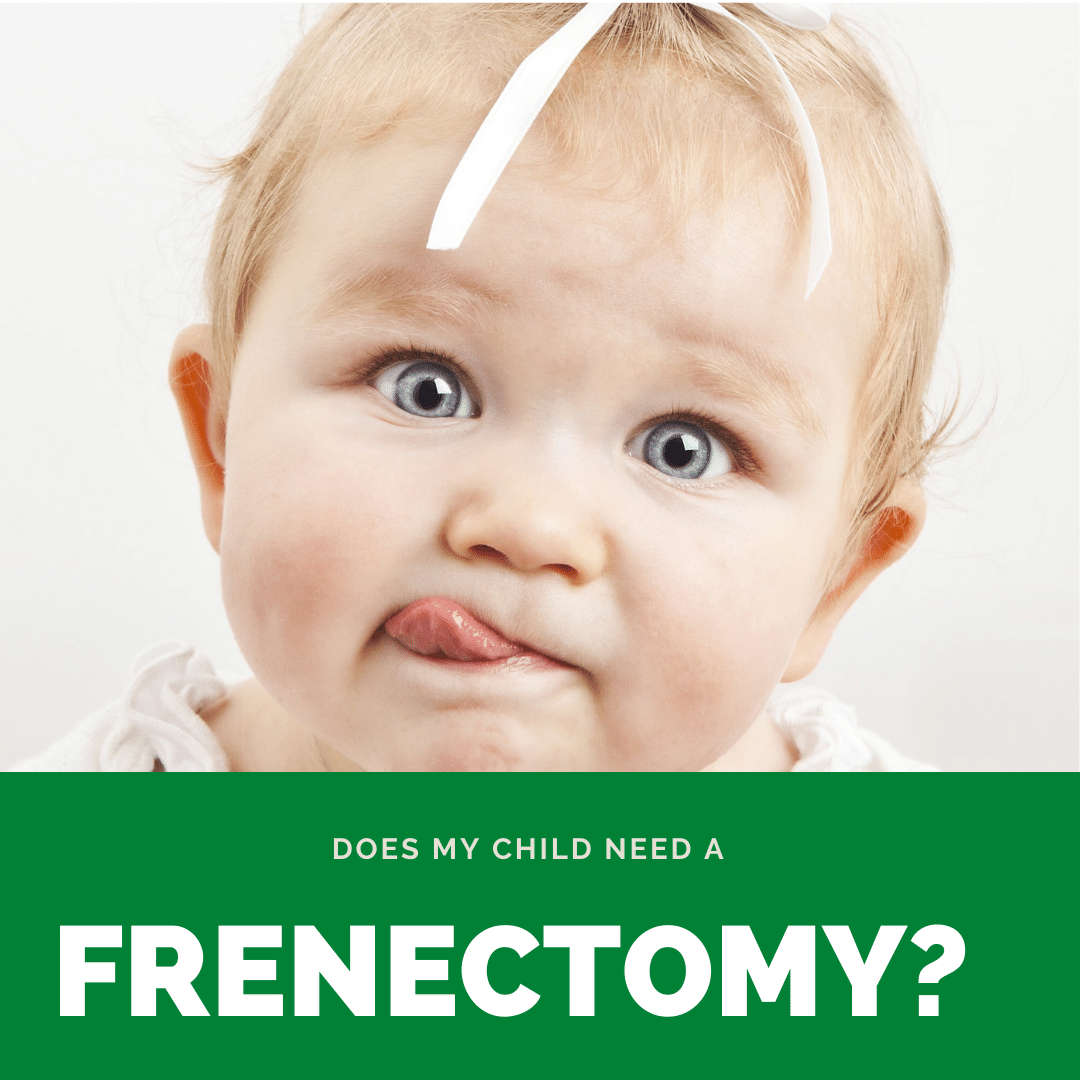Ankyloglossia is a condition that affects the lingual frenum, which is the connective tissue that holds the tongue to the bottom of the mouth. This condition is commonly known as “tongue tie” because of the fact that the lingual frenum is too short and restricts the tongue from being able to move properly. Tongue tie is seen in around 5% of infants, and although it can happen to boys and girls, it is more prevalent in boys.
While tongue tie occurs more frequently, there is also a condition known as lip tie that can also occur. Lip tie is when the connective tissue, known as the labial frenum, behind the upper lip is too short, preventing the upper lip from being able to move freely. Although they occur in different locations, both tongue tie and lip tie can cause speech impairments. Lip tie has also been associated with higher rates of tooth decay and gum disease since it can make it difficult to properly clean the teeth and gums.

In order to maintain your child’s oral health and allow for the proper movement of the upper lip and/or tongue, your child’s pediatric dentist may recommend a procedure known as a frenectomy. A frenectomy is performed by snipping the lingual or labial frenum with scissors, a scalpel, or a cauterizing instrument such as a dental laser in order to release the binding tissue. The entire procedure is quick and usually takes about 15 minutes or less.
Not every child with a lip or tongue tie will need a frenectomy, however here are some indications that your child may benefit from having one:
Difficulty Eating
One of the most common reasons for having a frenectomy performed is because the child is struggling to eat. Unfortunately, tongue tie makes it harder to swallow properly since the tongue movement is restricted. Not only does this make it harder for the child to swallow, but it can also make breastfeeding difficult and painful for the mother. Generally speaking, if newborns have a severe case of tongue tie, a frenectomy may be performed before leaving the hospital. However, just because your child did not receive a frenectomy doesn’t mean that they don’t need one.
Speech Problems
The tongue is a key structure involved in speaking. As such, when the tongue is unable to move properly, this will cause problems with speech. Specifically, children with tongue ties tend to develop lisps as a result of limited tongue movement. Although the upper lip is not as crucial for proper speech, some children can also develop speech problems as a result of lip tie.
Breathing Through Their Mouth

Occasionally, it is normal for children to breathe through their mouth. However, if you frequently catch your child breathing through their mouth, especially while sleeping, this can be a sign they need a frenectomy. This is because mouth breathing can be indicative of a labial frenum that is too short and won’t allow the mouth to close properly. Not only does mouth breathing cause dry mouth, which can increase the risk of tooth decay, but it can also cause an open bite to develop when continued for a long period of time.
Gap Between Upper Front Teeth
A gap between the upper front teeth can form when the lingual frenum is too tight and pulls on the gums. However, it is also normal for baby teeth to have gaps in between them, so gaps don’t automatically mean a frenectomy is needed. Your child’s pediatric dentist will be able to tell you if the gap between your child’s teeth is normal or caused by lip tie.
Gum Recession
Not only can lip tie cause a gap to form between the upper front teeth, but the constant pulling on the gum tissue can also lead the gums to pull away from the teeth in a process called gum recession. Gum recession will make your child’s teeth look larger than normal, expose the underlying tooth roots, and increase the risk of tooth decay and gum disease.






